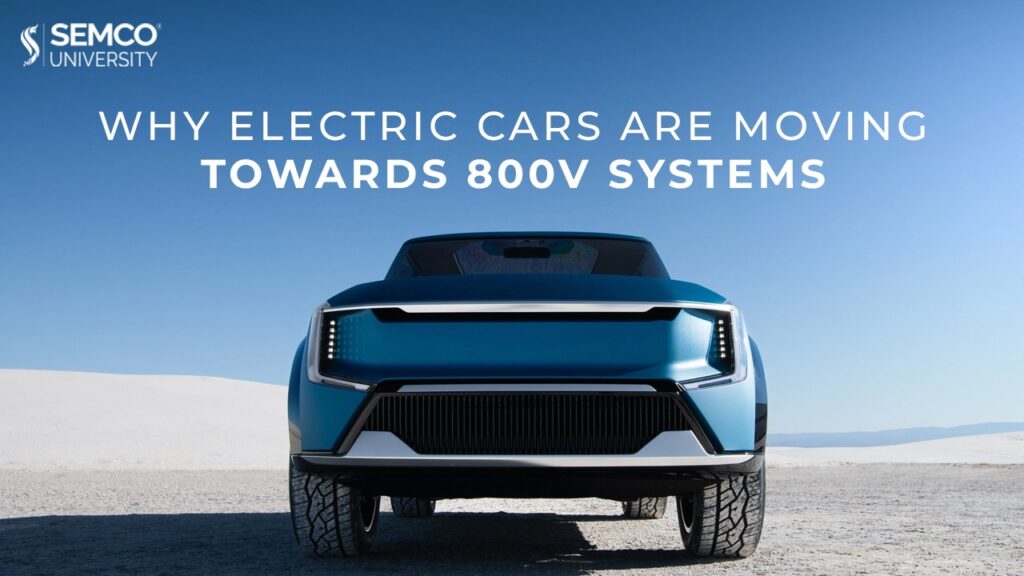Electric vehicle manufacturers are looking to improve charging speed and driving range. They’re achieving this by switching from 400V to 800V electrical systems. Here’s why:
Faster Charging:
Imagine going from “charge for 5 minutes, drive 200km” to reality. 800V systems can significantly reduce charging times by doubling the potential charging power. This is based on the principle P=VI (power equals voltage times current). With a higher voltage, you can either maintain the same current for double the power or reduce the current for faster charging without overheating components.
Benefits Beyond Speed:
800V systems offer more than just speed. They allow for:
- Thinner cables: Higher voltage means lower current for the same power, reducing cable thickness and weight.
- Improved efficiency: Less energy is lost as heat due to lower currents.
- Better performance: Higher voltage enables more powerful motors for faster acceleration and potentially increased driving range.
Challenges and Considerations:
- Cost: Upgrading to 800V requires replacing components like inverters with more expensive materials like silicon carbide (SiC). While SiC offers efficiency gains, it increases upfront costs.
- Infrastructure: Widespread adoption requires upgrading charging stations to handle 800V, which can be expensive. This creates a chicken-or-egg situation: carmakers hesitate to produce 800V cars without charging stations, and vice versa.
- Power Grid: Extremely fast charging puts a strain on the power grid. Upgrading the grid infrastructure is necessary for large-scale adoption.
The SiC Advantage:
SiC plays a crucial role in 800V systems. Its ability to handle higher voltages and reduce energy loss makes it ideal for inverters, chargers, and other components. The SiC market is expected to grow significantly due to the increasing demand for 800V technology.
Conclusion:
The 800V revolution is underway. While challenges exist, the benefits of faster charging, improved efficiency, and better performance make it a worthwhile investment for the future of electric vehicles. With advancements in SiC technology and infrastructure development, the dream of “charging for 5 minutes, driving 200km” might soon become a reality.

